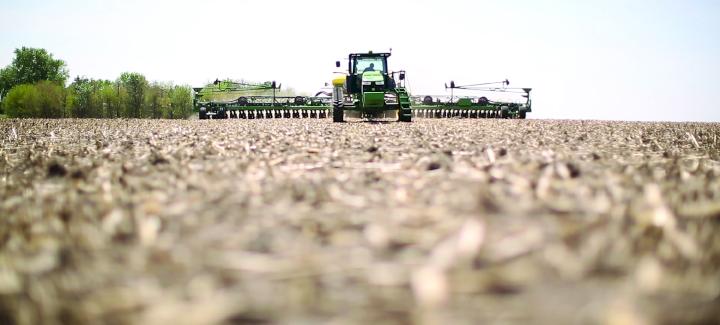
With four to eight weeks left before planting season (depending on your region), the clock is ticking for planting prep. Now’s the time to start checking your fields and pull the planter into the shop to ensure it’s in proper working order to hit the field. Resolving equipment issues now can help prevent planting delays or issues that could cause incorrect row spacing or seed depth come growing season. While it may seem early to start prepping your equipment, ordering parts to repair your planter may take several weeks. Plan ahead! We’ve dusted off a few of our favorite planting prep recommendations to get you started.
Plan Ahead
- Make a planting plan. Map out the fields you want to plant first. Hybrids with a good emergence score should be the first to get in the ground. Start with the best hybrid for cooler soil temps and then move forward down the line to achieve optimum emergence and plant stand.
- Don’t forget about soil fertility. Is your fertilizer plan adequate for planting? If you’re not sure, you still have time for soil testing. Find out what your fields are lacking, and replace the N, P and K that will allow you to achieve your yield goals. Your Stine sales rep can help you determine the appropriate amounts of fertilizer for your specific corn hybrid, soybean variety and field type.
- Know your field conditions. Is the soil too wet? Will compaction be a risk? Poor field conditions can affect plant vitality, including stand and emergence. We typically recommend ground temperatures hold steady at 50 degrees for at least three days before planting to help ensure good germination and emergence. Avoid planting into wet, cool and water-logged soil to prevent sidewall compaction and poor seed-to-soil contact, which results in poor germination and inconsistent stands.
- Consult your local Stine rep before planting. Changes in weather and field conditions may have an impact on the corn hybrids or soybean varieties you originally had slated for your fields. Consult with your local Stine sales rep to determine if you’re still making the right placement on each acre. Unforeseen circumstances can lead growers to need a different maturity or seed with a better cold emergence score right before planting. Your Stine sales rep can assist with any last-minute seed placement decisions.
Planter Maintenance
- Check that your software is up to date. Newer equipment has more computer systems to check and calibrate. For variable rate or precision planters, make sure everything is properly programmed and in working order. If you don’t have this technology for your planter, look at your field maps and make adjustments manually. Calibrate all meters and field-mapping software. Make all adjustments prior to planting to ensure proper seed placement and desired population.
- Check for signs of wear and tear. If you have older equipment, this should be a given. Start small and think big. Check seals, openers, closing wheels, bearings, row cleaners, vacuum/air lines, tires and seed tubes for signs of rust, cracks and loose ends. Make sure row units and seed tubes are in good shape to ensure proper seed placement. If a part needs replaced, order it as soon as possible. Don’t delay, or you risk a late start or running equipment that will result in uneven spacing or improper seed-to-soil contact.
- Prep the planter for proper soil penetration and seed placement. This step is especially important for no-till growers. Clean the wheels and cut blades. Check gauge wheels to make sure the row units will have proper contact with the ground. Disc blades should be inspected for chips and cracks. Test the equipment beforehand to ensure it’s making proper seed furrows.
For questions or concerns related to planting prep and equipment maintenance, contact your local Stine sales rep.
Related Articles
-

Stine® to offer Syngenta’s Victrato® soybean seed treatment in 2026
December 2025 in Agronomy
-

Use Stine’s XP® seed treatments to prevent early injury to your crops
December 2025 in Agronomy
-

Understanding Stine’s enhanced oil profile soybeans
December 2025 in Agronomy
-

Soil sampling sets the stage for spring
November 2025 in Agronomy



